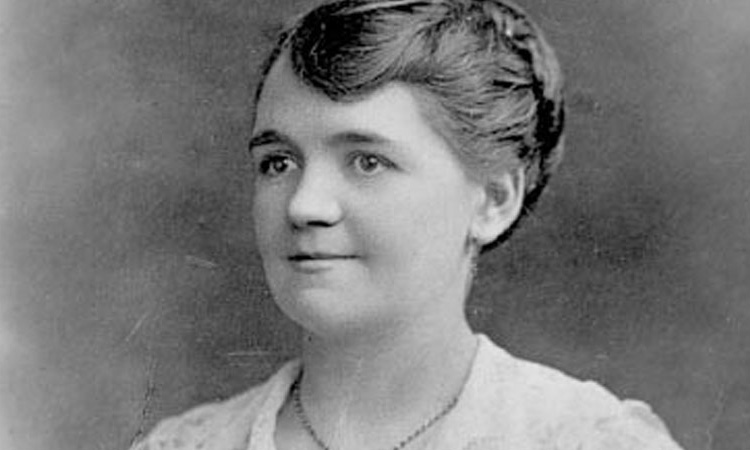
Asbestos-related diseases have always taken men’s lives more often than women’s. This has nothing to do with genetics, but rather a gender gap that made men more likely to work in direct contact with dangerous asbestos-containing products in the 19th and 20th centuries – in construction, high-skilled factory work, and the military, for example.
Yet in Britain, now known for the world’s highest mortality rates from asbestos-caused mesothelioma, the Industrial Revolution brought a wave of working women to challenge notions of female labor outside the home. These women took over the factory workforce, where they were exposed to hazards they’d never encountered. Most started work as young as 13-years-old.
One such woman was Nellie Kershaw, a British-born textile worker who spent her younger years unknowingly endangered by asbestos exposure. Nellie is now remembered as the first recorded person to die prematurely because of occupational asbestos exposure – exposure that led to pulmonary asbestosis.
At the time, Nellie’s case was unheard of. This Women’s History Month, almost a century after her death, could be the last for many brave women who find themselves in a similar position today.
Nellie’s Story
Nellie was born in Rochdale, an industrial town near Manchester, England, in 1891. At 12-years-old, she left school to work briefly in a cotton mill before entering the asbestos textile industry, where she’d spend the next 19 years spinning raw asbestos fiber into yarn.
By the time she transferred to Turner Brothers Asbestos (TBA), she had begun to feel the effects of what a National Health Insurance (NHI) certificate described as “asbestos poisoning” in 1922. The doctor who issued the certificate signed her off as unfit to work. But that particular diagnosis, as an occupational illness, deemed her ineligible for NHI sickness benefits. Insurers suggested she look to her employer for compensation instead.
Nellie and her husband wrote to TBA on multiple occasions, each letter a more desperate plea for help than the last. TBA repeatedly refused. The company’s determination to deny liability for Nellie’s injuries continued until 1924, when Nellie died in poverty at age 33. Even after Nellie’s premature death, TBA refused to compensate her bereaved husband and son or contribute to funeral expenses. She was buried in an unmarked pauper’s grave.
A Tragic Chain of Events
TBA’s refusal to accept liability for its part in neglecting workers’ safety, its refusal to accept the accuracy of Nellie’s diagnosis, and its use of legal and medical expertise as “evidence” for asbestos safety were strategies the worldwide industry would use for decades to come.
In the U.S., asbestos exposure peaked in the early 20th century and finally waned under the weight of indisputable, scientific evidence of asbestos dangers in the 1970s; but not before the asbestos industry and its allies had put up a fight to bend asbestos regulation to their collective will. Their efforts were strong enough to overturn the EPA’s attempts to fully ban the substance.
Even with the EPA’s attempt to ban asbestos, their efforts were much too late. Asbestos companies had already knowingly risked their workers’ health for decades by forcing them to work in and among unsafe working conditions; all it takes is one asbestos fiber to develop fatal diseases like mesothelioma.
Mesothelioma’s long latency period means that many Americans are only just now being diagnosed. In addition, an increasing proportion (often diagnosed younger) are females, who now account for more of the high-risk labor force than ever. Sadly, they also account for increasing proportions of the roughly 3,000 new cases of mesothelioma and subsequent deaths every year.
Looking Ahead
Nellie Kershaw is one woman who made history as a devastating example of the asbestos industry’s cold-hearted, profit-first business model.
It is important that we look back on her life with gratitude. After a postpartum examination of Nellie’s lungs revealed “fibrosis of the lungs due to the inhalation of mineral particles” as the only possible cause of her death, a coroner published her case in the British Medical Journal in 1927. The paper led to further inquiries, the first health study of asbestos workers, and the first publication of the first Asbestos Industry Regulations in 1931.
Though far too many women now share Nellie’s experiences with untimely and avoidable disease, advancements in asbestos research have allowed women around the world to prove occupational exposure and hold asbestos companies accountable.
This Women’s History Month is a chance to commemorate women like Nellie, who gave up everything – in this case, their lives – to support their families. More importantly, it is a chance to celebrate today’s astounding mesothelioma survivors, whose stories need not end the same way Nellie’s did. With strong women willing to take a stand against injustice, asbestos companies don’t stand a chance.




